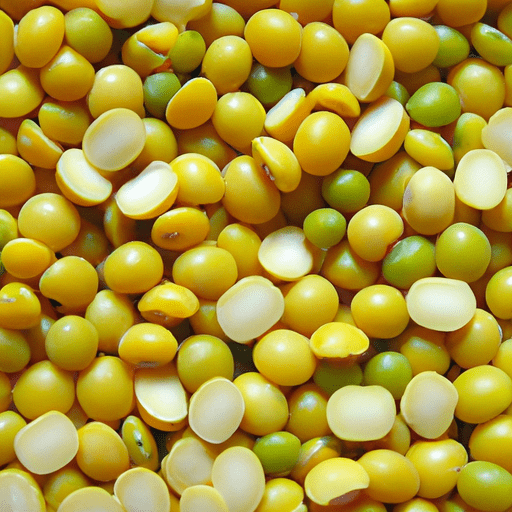All You Need to Know About Skinned Green Gram
If you’re looking to expand your culinary horizons, skinned green gram might just be the ingredient you’ve been waiting for. This humble legume, also known as mung dal or split green gram, has a delicate flavor profile and numerous health benefits. In this blog post, we’ll explore the taste, common uses, nutritional value, and interesting history of skinned green gram.
Taste and Texture
Skinned green gram has a mild, earthy flavor with a hint of nuttiness. When cooked, it becomes soft, creamy, and slightly mushy. This makes it an incredibly versatile ingredient that can adapt to various dishes and cooking techniques. Its ability to absorb flavors also makes it a fantastic base for soups, stews, and curries.
Common Uses in Cooking
Skinned green gram is a staple in Indian, Middle Eastern, and Southeast Asian cuisines. It can be used in a variety of dishes, both savory and sweet. Here are some popular ways to incorporate skinned green gram into your cooking:
- Dal: Skinned green gram is often used to make dal, a rich and flavorful lentil soup. It can be enjoyed on its own or paired with rice or bread for a complete meal.
- Curries and Stews: Skinned green gram adds a heartiness and creaminess to curries and stews, making them more satisfying and nutritious. It pairs well with a range of vegetables and spices.
- Salads and Sprouts: When sprouted, skinned green gram becomes a crunchy and nutritious addition to salads, sandwiches, and stir-fries. It offers a fresh and vibrant texture.
- Sweets and Desserts: Skinned green gram can also be used to create sweet treats like moong dal halwa or payasam. Its mild flavor blends beautifully with sugar, milk, and aromatic spices.
Nutritional Value
Skinned green gram is a nutritional powerhouse packed with essential vitamins, minerals, and dietary fiber. Here are some key nutritional highlights:
- Protein: Skinned green gram is a rich source of plant-based protein, making it an excellent choice for vegetarian and vegan diets.
- Fiber: The high fiber content of skinned green gram aids digestion, promotes satiety, and helps maintain healthy cholesterol levels.
- Vitamins and Minerals: It is a good source of iron, magnesium, potassium, and folate, which are important for overall health and well-being.
- Low in Fat: Skinned green gram is naturally low in fat, making it a nutritious addition to a balanced diet.
Interesting History and Facts
- Skinned green gram has been cultivated for thousands of years and is believed to have originated in the Indian subcontinent.
- It was one of the first crops to be domesticated in ancient civilizations, showcasing its significance as a staple food.
- Ayurveda, the ancient Indian system of medicine, recognizes skinned green gram for its various health benefits, including detoxification and rejuvenation.
- In Chinese cuisine, skinned green gram is commonly used in desserts and sweet soups as it is believed to have a cooling effect on the body.
Skinned green gram truly is a versatile and nutritious ingredient that can elevate your cooking to new heights. Whether you’re looking to add protein to your meals, enhance the flavors of your curries, or experiment with sprouts in salads, skinned green gram has got you covered. So why not give this charming legume a try? Your taste buds and your body will thank you!
Remember to soak skinned green gram before cooking to reduce cooking time and enhance its digestibility.
Skinned Green Gram
- Skinned green gram, also known as split mung beans or yellow moong dal, is a versatile ingredient widely used in Indian cuisine.
- It is believed to have originated in the Indian subcontinent, where it has been consumed for thousands of years.
- Skinned green gram is obtained by removing the green husk of whole mung beans and splitting them into halves. This process exposes the pale yellow split beans.
- Due to their mild flavor and soft texture, skinned green gram is commonly used in soups, stews, curries, and as a filling in various Indian snacks such as dosas and vadas.
- It is rich in protein, dietary fiber, and various essential nutrients such as folate, magnesium, phosphorus, and potassium.
- Skinned green gram is a low-fat and cholesterol-free source of high-quality protein, making it a valuable ingredient for vegetarian and vegan diets.
- It is also a good source of complex carbohydrates, which provide sustained energy and help regulate blood sugar levels.
- Consuming skinned green gram regularly can contribute to improved digestion, as it is high in dietary fiber that aids in proper bowel movements.
- Due to its nutritional profile, skinned green gram is considered a healthy ingredient that supports weight management and overall well-being.
- In Ayurvedic and traditional medicine practices, skinned green gram is believed to have cooling properties and is often used to balance an excess of heat in the body.
- Ancient Ayurvedic texts also describe the use of mung beans for detoxification and cleansing purposes.
- Skinned green gram has a long history in Indian cooking and is deeply rooted in cultural and festive traditions, making it an integral part of many celebrations and religious rituals.




Use the share button below if you liked it.
It makes me smile, when I see it.